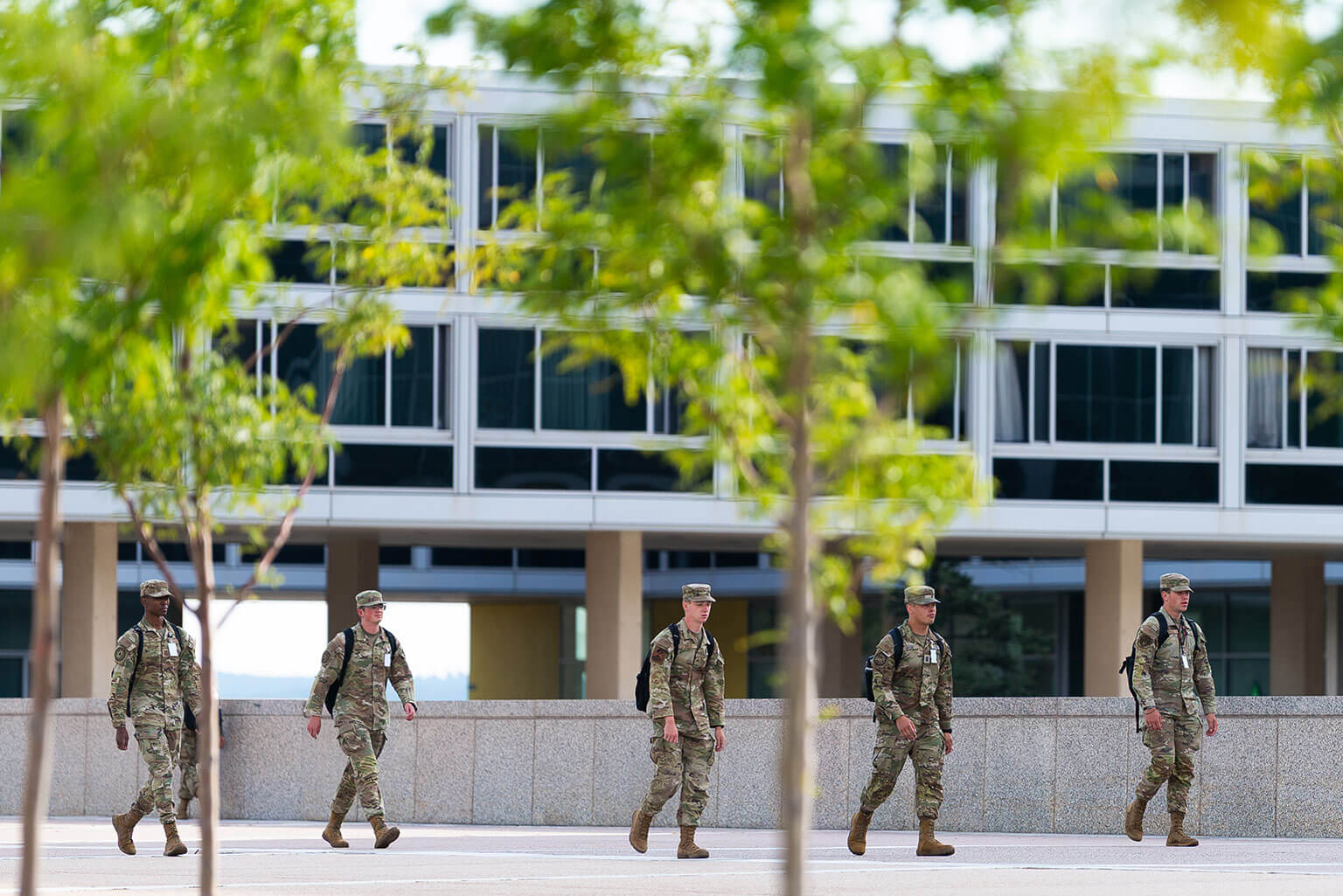U.S. Air Force Academy adapts to civilian workforce reduction, maintains academic excellence

On the first day of class for the academic year, cadets walk across the Terrazzo at the U.S. Air Force Academy, Colo., Aug. 7, 2025. Amid a Department of Defense-wide civilian workforce reduction, the Academy remains dedicated to its core mission of forging the next generation of Air Force and Space Force leaders. (U.S. Air Force photo by Ray Bahner)
U.S. Air Force Academy Strategic Communications
A new academic year is underway at the U.S. Air Force Academy, with cadets attending classes, competing in athletics, participating in physical training, and advancing their military skills. Amid a Department of Defense-wide civilian workforce reduction, the Academy remains dedicated to its core mission of forging the next generation of Air Force and Space Force leaders.
U.S. Air Force Academy Superintendent Lt. Gen. Tony D. Bauernfeind expressed sincere appreciation for the civilian workforce that supports the entirety of the Academy’s mission. “Our civilian teammates play a vital role in each of our mission sets, from military and leadership training to academics, athletics, and installation support,” said Lt. Gen. Bauernfeind.
As part of the DoD’s effort to reduce its civilian workforce, the Academy identified 140 positions to be defunded in fiscal year 2025. Of these, 36 were occupied, while 104 were vacant or set to be vacated under the Deferred Resignation Program.
Through two rounds of the DRP, federal employees were offered the opportunity to voluntarily resign and receive paid administrative leave through the end of the fiscal or calendar year. The program provided financial support for transitioning civilian employees while enabling the DoD to reshape its workforce. Eligible employees also had the option to apply for Voluntary Early Retirement Authority, which allowed them to begin collecting full retirement pay earlier than scheduled.
Lt. Gen. Bauernfeind emphasized the institution’s commitment to supporting affected employees, saying, “The goal is to continually work over the coming months to see how we can move teammates laterally into open billets, either at the Academy or other locations, to keep their expertise within the broader Air Force and Space Force enterprise.”
To date, 11 of 36 civilian employees in positions designated for defunding have been matched with and will be reassigned to higher priority roles within the Academy.
“We’re dedicated to supporting the transition of all our civilian teammates,” said Kathryn Russel, Director of Manpower, Personnel, and Officer Accessions. “We recognize that uncertainty can be challenging for our civilian employees, and by communicating early and often about the options available to them, we hope to help them navigate this change and find new opportunities, whether within our institution or beyond.”
The Academy had 25 faculty members depart this year, primarily through the Deferred Resignation Program, natural or early retirements, and term positions that have ended. In response, the institution has augmented its faculty with 19 additional military personnel with appropriate degrees and teaching skills, who will bring valuable operational experience to the classroom.
Acting Dean of the Faculty Col. Steve Hasstedt noted, “As leaders in the classroom, military and civilian faculty hold cadets to the highest standards in their academic development, in order to instill the patterns of critical thinking and expertise we need from future leaders in the Air Force and Space Force.”
While managing the impact of the civilian workforce reduction, the Academy remains focused on delivering academic excellence. Cadets complete a comprehensive core curriculum and pursue specialized majors and minors, equipping them with the knowledge, experience, and critical thinking skills necessary to succeed as officers.
The Academy’s curriculum is regularly reviewed to ensure alignment with advancements in academic fields, as well as with National Security requirements, warfighting readiness, and officer development. While some courses are offered every term, others are offered periodically or when faculty expertise is available. The curriculum is also shaped by the interests of cadets and the courses they select.
This year, the Academy added four new classes and introduced three new minors. A broad catalog of core courses and electives remains available, with over 750 courses, and all majors remain intact.
“Many thanks to the Dean of Faculty professionals,” said Lt. Gen. Bauernfeind. “They are adjusting quickly, making the needed changes to ensure we can continue to offer the majors we promised through the Class of ‘26.”
“I can confidently attest we are maintaining the academic rigor, accreditation, and high standards expected at the U.S. Air Force Academy,” he continued. “Our faculty and staff are providing a world-class education to our cadets, and our institution will continue to produce officers ready to meet the challenges of a rapidly evolving security environment.”